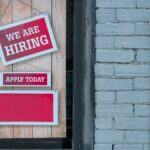
Top candidates don’t apply to companies—they apply to reputations. In a market where skilled professionals can scroll past your careers page in seconds, a deliberate, credible, and consistent employer branding strategy is how you win attention, earn trust, and convert interest into applications. This is not about slogans or perks; it’s how you design the real experience of working at your company, then tell that story where talent is listening.
In this deep-dive, you’ll learn how to architect employer branding that attracts exceptional people, reduces time-to-hire, and lifts retention—without losing your human touch. We’ll unpack the operating system behind magnetic brands, from the Employee Value Proposition (EVP) and narrative pillars to the distribution engine across social, search, and employee networks. You’ll also get governance guardrails for fairness, authenticity, and compliance, plus a rollout plan you can start this quarter.
Why Employer Branding Is a Hiring Superpower
High-intent candidates perform due diligence: they scan your careers page, your leaders’ posts, employee reviews, and your footprint on LinkedIn and industry communities. If the story they find is coherent and credible, they convert faster, enter interviews with context, and remain more engaged across the funnel. Strong employer branding impacts:
- Quality of pipeline: More applicants who meet your bar and align with your mission.
- Speed and cost: Lower cost-per-hire and shorter time-to-hire as reputation compounds.
- Diversity of slates: Broader reach and appeal to underrepresented talent through inclusive narratives and access channels.
- Retention: Expectations match reality, reducing early churn and mis-hires.
If you’re just getting started with strategic hiring foundations, pair your brand push with better interview craft and candidate conversations. See: 10 Smart Questions to Ask Your Interviewer, and ensure your teams model the same clarity in interviews.
Crafting a High-Trust EVP (Employee Value Proposition)
Your EVP is the promise you’re making to employees: the work, the growth, the community, and the impact. It should be precise, differentiated, and verifiable. Avoid platitudes (“great culture”) and focus on specifics candidates can validate: manager capability, feedback cadence, mobility paths, mentorship, learning budgets, flexible work norms, and recognition rituals.
How to gather raw truth
- Voice-of-Employee interviews: Ask people why they joined, why they stay, and when they considered leaving.
- New-hire debriefs: Collect impressions at 30/60/90 days—what matched the pitch and what surprised them.
- Exit interviews: Extract patterns, not anecdotes. Are issues fixable via process or manager enablement?
- Glassdoor/Indeed reviews: Don’t dismiss; mine for themes your EVP must address or reframe.
EVP structure
- Mission & Impact: Why this work matters now and to whom.
- Growth & Mobility: Skills, stretch, and pathways (ladders, lattices, rotations).
- Ways of Working: Collaboration norms, flexibility, async rules, focus time, meeting hygiene.
- Leadership & Feedback: Coaching, 1:1s, performance clarity, decision-making transparency.
- Recognition & Rewards: Compensation philosophy, equity or profit-sharing, non-monetary recognition.
- Belonging & Wellbeing: Psychological safety, support systems, benefits that matter.
For teams planning multi-year talent roadmaps, align EVP with role architecture and personalized development. See: The 5-Year Career Plan and Build a Passion-Aligned Career.
Narrative Pillars: From Values to Proof
Employer brands are stories told through evidence. Map three to five narrative pillars and connect each to proof points, channels, and target audiences. Example pillars:
- Inclusive growth: Leadership programs for women and underrepresented groups; transparent promotion criteria; sponsorship networks. (Related: Gender Inclusion and the Future of Work)
- Hands-on impact: Customer stories, community programs, or open-source contributions.
- Learning culture: Internal courses, conference budgets, peer dojos, and demo days.
- Sustainable work: Norms that prevent burnout; no-Meeting Fridays, focus sprints, team reset weeks.
Document the narrative system: who speaks (leaders, ICs, alumni), where (LinkedIn, YouTube, podcasts, dev forums), and how often. Quality beats volume—curate stories that capture real people solving real problems.
Designing the Actual Employee Experience
A brand that promises growth but delivers stagnation will backfire. Start with the experience, then market it. Experience design spans:
- Onboarding: Role clarity by week two, buddy/mentor assigned, and a 30-60-90 plan.
- Performance: Clear levels, calibrated expectations, and frequent, actionable feedback.
- Mobility: Internal job boards, temporary gigs, and manager incentives to support moves.
- Recognition: Public wins, peer nominations, and leadership shout-outs tied to values.
- Wellbeing: Mental health benefits, workloads managed by policy, and time off actually used.
Ground your experience with practical team habits. For culture hygiene and daily execution, review: Best Practices in the Workplace and Problem Solving in the Workplace.
Careers Page That Converts
Think of your careers page as a product page for your culture. It should load fast, answer real candidate questions, and make applying simple.
Must-haves
- EVP above the fold: In plain language; link to full EVP and benefits details.
- Team snapshots: Short videos or quotes from engineers, marketers, sales, ops.
- Job discovery: Search by location, level, function; show salary bands where possible.
- Transparency: Interview process outline, timelines, and preparation tips.
- Accessibility: WCAG-friendly design, readable color contrast, keyboard navigation.
Streamline content with internal anchor links and intelligent interlinking to your thought-leadership. Example internal primers: Time-Saving Chrome Extensions, AI at Work: Top Tools, and Workplace Cybersecurity Tips to align with your tech-forward brand.
The Employer Brand Content Engine
Brands that win publish consistently. Build a lightweight newsroom for culture narratives, hiring priorities, and employee voices. Components:
- Edit calendar: 2–4 posts per month: employee spotlights, project stories, manager Q&A, community highlights.
- Formats: Short videos, reels, carousels, podcasts, technical blogs, live AMAs.
- Distribution: LinkedIn (company + employee pages), YouTube shorts, dev forums, newsletters.
- Recycling: Turn a long-form interview into a reel, a carousel, a blog post, and internal training.
- Legal & privacy: Use media consent forms; protect customer or confidential data.
Empower creators with templates: interview question banks, story arcs, and call-to-action (CTA) snippets. For inspiration on communicating value concisely, see Professional Networking: Turn Contacts into Opportunities.
Candidate Experience: Consistency at Every Touchpoint
Candidates judge your brand by how you treat their time. Consistency requires playbooks and instrumentation:
- Job ads: Skills-first, plain-language requirements, salary ranges where allowed.
- Application: 5 minutes or less; mobile-friendly; ATS errors flagged in real time.
- Scheduling: Offer self-serve slots; confirm expectations and interviewers ahead of time.
- Interviews: Structured rubrics, clear role outcomes, and time for candidates’ questions.
- Feedback: Timely and constructive, even for declines.
Equip hiring managers with interview kits and question banks. Cross-link prep content to help candidates prepare and feel respected. For good question design, point to Unique Interview Questions.
Inclusion, Equity, and Representation as Brand Strength
Top talent expects inclusive teams and equitable processes. Treat DEI as design, not as an afterthought. Embed inclusion in:
- Job ads: Eliminate gendered or exclusionary language; focus on must-have skills.
- Sourcing: Diversify channels and communities; partner with organizations serving underrepresented groups.
- Assessment: Structured rubrics; minimize reliance on pedigree; ensure accommodations are accessible.
- Progression: Transparent leveling and promotion criteria; sponsorship and mentorship networks.
Signal your stance publicly, then show receipts via representation metrics, transparent updates, and leadership accountability. For the strategic upside of inclusion, revisit How Global Workforces Benefit from Gender Inclusion.
Measuring ROI: Signals That Actually Matter
Measure both attraction and outcomes. Vanity metrics (impressions) matter less than behavior (qualified applies, completion rates, interview-to-offer ratios). Build a scorecard spanning:
- Top of funnel: Reach by priority audience; CTR on job ads; careers page conversion.
- Mid-funnel: Interview pass-through by stage; adverse impact ratios; candidate NPS.
- Quality: Offer acceptance rates; first-year retention; performance at 6/12 months.
- Efficiency: Time-to-hire and cost-per-hire; agency reliance; hiring manager satisfaction.
Pair funnel metrics with culture health: psychological safety, manager capability, workload sustainability, and mobility rates. Remember: the strongest employer brands are built on healthy teams.
Tools, Channels, and Templates
Distribution channels
- LinkedIn: Company page, employee posts, alumni stories, and targeted job ads.
- Instagram/TikTok: Behind-the-scenes reels, employee takeovers, day-in-the-life content.
- YouTube: Project deep dives, culture playlists, leadership AMAs.
- Podcasts/Communities: Niche industry shows and forums where your talent hangs out.
- Careers blog: Case studies, team features, engineering notes, product retros.
Helpful internal resources
- Interview kits and structured rubrics (reduce noise and bias).
- Story capture templates for employee spotlights.
- Visual asset library (logos, slide templates, B-roll, caption guidelines).
- Consent forms and brand safety checklist.
For a modern tooling baseline that supports your brand and recruitment ops, check Remote Work Software, Workplace Automation Playbook, and Workplace Cybersecurity Tips.
Common Mistakes and How to Avoid Them
- Brand without substance: Announcing values you don’t practice invites reviews that damage trust. Build the experience first.
- Over-produced content: Candidates prefer authentic voices to glossy campaigns. Encourage real stories.
- Ignoring managers: Direct managers shape the day-to-day. Invest in manager training and coaching.
- One-size-fits-all: Segment audiences (engineering, GTM, ops). Customize narratives and channels.
- Silencing critics: Engage respectfully, acknowledge faults, and outline fixes. Credibility grows when you respond.
- Underfunded measurement: If you can’t measure it, you can’t improve it. Instrument the funnel and the culture.
- Compliance blind spots: Align hiring communications and data use with local regulations and accessibility standards.
90-Day Employer Branding Playbook
Days 1–30: Discover & Decide
- Interview 20–30 employees across levels and functions. Synthesize themes.
- Analyze candidate journey: drop-off points, review sites, message gaps.
- Define your EVP and three to five narrative pillars with proof points.
- Pick two priority talent segments and two core channels to start.
Days 31–60: Build & Pilot
- Rewrite job ads to be skills-first and inclusive.
- Revamp careers page with EVP above the fold, team stories, and interview transparency.
- Publish four to six pilot content pieces (spotlights, project stories, leader posts).
- Train interviewers on structured rubrics and consistent candidate comms.
Days 61–90: Scale & Measure
- Launch employee advocacy program; provide creative kits and guidelines.
- Set monthly scorecards for attraction, conversion, fairness, and quality.
- Hold a quarterly brand retro with People, Comms, and hiring managers.
- Expand channels (podcasts, communities) based on early wins.
What’s Next for Employer Branding
Three shifts will define the next wave:
- Skills storytelling: Talent wants to see how work maps to skill growth. Brands will publish learning paths and internal mobility wins.
- Transparency by default: Salary bands, interview steps, hybrid norms, and manager philosophy will be public.
- Community over campaigns: Ongoing conversations with talent pools—events, AMAs, open houses—will matter more than one-off launches.
As employee expectations evolve (flexibility, autonomy, meaning), brands that continuously calibrate their EVP and show progress will lead the market.
Further Reading
- LinkedIn Talent Blog – research and insights on hiring and employer branding.
- Gallup Workplace – engagement, manager capability, and performance insights.
- SHRM – employer brand, culture, and compliance guides.
- Deloitte Human Capital Trends – macro talent trends and leadership practices.
- Edelman Trust Barometer – trust signals shaping employer expectations and communications.
- Harvard Business Review – leadership, motivation, and org design research.
- Open Badges & Skills Signaling – frameworks for skills recognition and mobility (overview resource).
FAQs: Employer Branding for Hiring Teams
How long before employer branding shows results?
Expect early signals within 60–90 days (higher job ad CTR, better careers-page conversion, more qualified applies). Quality-of-hire and retention lift typically appear over 6–12 months as cohorts onboard and ramp.
What budget do we need to do this well?
Start lean: repurpose existing channels, empower employee advocates, and prioritize a revamped careers page. As you measure ROI (cost-per-hire, time-to-hire), justify incremental budget for content, events, and targeted ads.
How do we balance authenticity with risk?
Use consent workflows, avoid confidential details, and coach employees on brand and legal basics. Encourage real stories with a light editorial hand rather than scripts. Authenticity wins—but guard privacy.
What if our Glassdoor rating is low?
Conduct root-cause analysis (manager capability, workload, growth clarity). Fix upstream issues, communicate changes, and invite balanced feedback. Reputation follows reality—address causes, then narrate progress.
Should we pay employees to post?
Referrals and advocacy rewards are fine, but don’t buy praise. Provide templates, prompts, and creative tools; keep posts voluntary and genuine to maintain trust.
Is salary transparency required?
It depends on jurisdiction. Increasingly, salary transparency is expected by candidates. Where allowed, publishing bands boosts trust and candidate match quality.
Which teams should go first?
Start with high-priority, high-visibility roles (e.g., engineering, sales). Gather learnings and expand. Tailor narratives per function; technical audiences want evidence of real challenges and autonomy.




Social Proof: Reviews, Referrals, and Employee Advocacy
Prospects believe peers more than polished brand pages. Activate social proof across:
Use a light governance touch: supply do’s and don’ts, not scripts. Authentic, imperfect stories outperform corporate varnish.